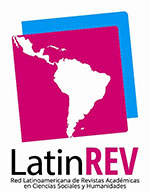La robótica educativa una herramienta para la enseñanza-aprendizaje de las ciencias
Palabras clave:
Enseñanza-Aprendizaje, Tecnologías Emergentes, Educación, Investigación, RobóticaResumen
Se ha aplicado tecnología novedosa para mejorar las habilidades de aprendizaje de los estudiantes en diferentes disciplinas. La investigación en este campo aún está encontrando metodologías, herramientas y mecanismos de evaluación adecuados para diseñar marcos de aprendizaje con alto impacto en el desempeño de los estudiantes. La introducción de nuevas tecnologías en la educación no sólo debe exponer a los estudiantes a dichas tecnologías para brindarles mejores oportunidades de elegir futuros estudios y trabajos, sino también mejorar el proceso de aprendizaje en las materias curriculares. La idea de usar tecnologías digitales para apoyar el desarrollo del funcionamiento mental tiene sus raíces en la psicología constructivista social de Vygotsky, según la cual las tecnologías educativas son herramientas cognitivas que funcionan como socios en el aprendizaje Vygotsky.
Descargas
Citas
Atmatzidou, S., & Demetriadis, S. (2016). Advancing students’ computational thinking skills through educational robotics: A study on age and gender relevant differences. Robotics and Autonomous Systems, 75, 661–670. https://doi.org/10.1016/j.robot.2015.10.008
Barrera, N. (2014). Uso de la robótica educativa como estrategia didáctica en el aula. Praxis & Saber, 6.
Belpaeme, T., Kennedy, J., Ramachandran, A., Scassellati, B., & Tanaka, F. (2018). Social robots for education: A review. Science Robotics, 3(21). https://doi.org/10.1126/scirobotics.aat5954
Benitti, F. B. V. (2012). Exploring the educational potential of robotics in schools: A systematic review. Computers & Education, 58(3), 978–988. https://doi.org/10.1016/j.compedu.2011.10.006
Castro, F., Briegas, J. J., González, S., & González, D. V. (2017). Actividad extraescolar para aprender a aprender: la robótica como herramienta educativa. Revista de Estudios e Investigación En Psicología y Educación, 124–128. https://doi.org/10.17979/reipe.2017.0.13.2542
Charisi, V., Gomez, E., Mier, G., Merino, L., & Gomez, R. (2020). Child-Robot collaborative problem-solving and the importance of child’s voluntary interaction: A developmental perspective. Frontiers in Robotics and AI, 7. https://doi.org/10.3389/frobt.2020.00015
D’Amico, A., Guastella, D., & Chella, A. (2020). A playful experiential learning system with educational robotics. Frontiers in Robotics and AI, 7. https://doi.org/10.3389/frobt.2020.00033
de Haas, M., Vogt, P., & Krahmer, E. (2020). The effects of feedback on children’s engagement and learning outcomes in robot-assisted second language learning. Frontiers in Robotics and AI, 7. https://doi.org/10.3389/frobt.2020.00101
González Fernández, M. O., Flores González, Y. A., & Munõz López, C. (2021, April 6). Panorama de la robótica educativa a favor del aprendizaje STEAM. Revista Eureka, 18(2). https://doi.org/10.25267/Rev_Eureka_ensen_divulg_cienc.2021.v18.i2.2301
Guneysu Ozgur, A., Özgür, A., Asselborn, T., Johal, W., Yadollahi, E., Bruno, B., Skweres, M., & Dillenbourg, P. (2020). Iterative design and evaluation of a tangible robot-assisted handwriting activity for special education. Frontiers in Robotics and AI, 7. https://doi.org/10.3389/frobt.2020.00029
Jiménez, S. (2014). Tecnología educativa: campos de formación y perfil diferencial (pp. 125–141). http://ries.universia.net
Kory-Westlund, J. M., & Breazeal, C. (2019). A long-term study of young children’s rapport, social emulation, and language learning with a peer-like robot playmate in preschool. Frontiers in Robotics and AI, 6. https://doi.org/10.3389/frobt.2019.00081
Lamoyi, L. (2012). La robótica Lego Mindstorms: un recurso didáctico para fortalecer el pensamiento lógico matemático.
Leite, I., McCoy, M., Lohani, M., Ullman, D., Salomons, N., Stokes, C., Rivers, S., & Scassellati, B. (2017). Narratives with robots: The impact of interaction context and individual differences on story recall and emotional understanding. Frontiers in Robotics and AI, 4. https://doi.org/10.3389/frobt.2017.00029
Li, J. (2015). The benefit of being physically present: A survey of experimental works comparing copresent robots, telepresent robots and virtual agents. International Journal of Human-Computer Studies, 77, 23–37. https://doi.org/10.1016/j.ijhcs.2015.01.001
Lopes, A., Lopes, F., & Guedes, A. (2015). Experiencias de robótica educativa. 2, 193–204. http://tecnociencia-sociedad.com
Scaradozzi, D., Cesaretti, L., Screpanti, L., & Mangina, E. (2020). Identification of the students' learning process during education robotics activities. Frontiers in Robotics and AI, 7. https://doi.org/10.3389/frobt.2020.00021
Shiomi, M., Kanda, T., Howley, I., Hayashi, K., & Hagita, N. (2015). Can a social robot stimulate science curiosity in classrooms? International Journal of Social Robotics, 7(5), 641–652. https://doi.org/10.1007/s12369-015-0303-1
Tanaka, F., & Inamura, T. (2020). The 28th IEEE International Conference on Robot and Human Interactive Communication (RO-MAN 2019). Journal of the Robotics Society of Japan, 38(1), 56–56. https://doi.org/10.7210/jrsj.38.56
Zhexenova, Z., Amirova, A., Abdikarimova, M., Kudaibergenov, K., Baimakhan, N., Tleubayev, B., Asselborn, T., Johal, W., Dillenbourg, P., CohenMiller, A., & Sandygulova, A. (2020). A comparison of social robot to tablet and teacher in a new script learning context. Frontiers in Robotics and AI, 7. https://doi.org/10.3389/frobt.2020.00099









